Director Christopher Nolan’s new film Interstellar, comes out tomorrow and is already generating a lot of buzz. Besides the fact that the film is the first notable, non-car commercial project of the post-McConaissance era, Nolan’s recent assertions that his picture is at its best when viewed in 35mm or 70mm rattled a few cages. As for the movie itself, imdb.com writes that, “a group of young explorers make use of a newly discovered wormhole to surpass the limitations on human space travel and conquer the vast distances involved in an interstellar voyage.”
All the post-Oscar buzz and digital-vs-film discussions aside, Interstellar seems like a classic (albeit updated) throwback to the mid-20th century space-saga pics that glorified trips into the expansive unknown the same way wagon-train westerns had before them. This genre keeps resurfacing every few years, yet rarely in any saturated way to flood the market, for space pictures are usually expensive things to produce. They’re not a slam dunk proposition, either (for example, see Red Planet), yet when done right, space exploration pictures can put asses in seats.
Today’s Top 10 list took a look at the best examples of movies that focused on space exploration, and ranked them based on the size and severity of the pickles encountered. Since there is little drama in intergalactic missions that go off without a hitch, a vast majority of films that play around in this genre’s sandbox feature some kind of disaster, thus, there was no shortage of candidates. To make it into consideration, the film had to focus on space exploration rather than conquest, something that ruled out any kind of mishap or disaster related to warring parties. No, to find a spot in the ranking below, the astronauts/explorers of the picture had to have been out there for purely scientific purposes, and not as a member of (or in opposition to) a military faction.
This ruled out The Fifth Element, Flash Gordon, Starship Troopers, Star Wars (et al), Moonraker, Lockout, and other movies of that ilk. No, what we were looking for today was pure science and/or exploration outside of Earth gone terribly wrong. Although Scene-Stealers is holding off on seeing Interstellar until later this week like everyone else, since movies that deal with space exploration usually involve some kind of problem or disaster, chances are, Mr. Nolan’s film is going to find itself in good company with the candidates listed below. Some honorable mentions that just missed a spot in the ranking included Space Camp, Space Cowboys, Space Chimps, Moon, and Armageddon. Stargate was considered, yet since there is still some dispute about whether that was space vs. inter-dimensional exploration, it was left out. Finally, Contact nearly got a spot in the ranking, yet since everything went pretty much according to plan during that expedition (by the aliens’ standards, anyway), it didn’t seem to fit into today’s discussion. So, that just left us with…
Well, one could make a case that this exploration didn’t end in unmitigated disaster, as the vessel the astronauts were on in Planet of the Apes did indeed return them home to Earth and in one piece, albeit a few millennia late. As an example of space exploration gone wrong, however, the ordeal of Taylor (Charlton Heston) and his crew in this picture most certainly qualified. In Planet of the Apes, Taylor was part of a four-person team sent on a near-light speed voyage into space. The movie opened with Taylor waking up from hibernation as his ship crashed into a lake on an unknown planet. Unable to really take stock of the situation beyond ascertaining the date and the fact that one of his crew was dead, Taylor and the two remaining survivors escaped their vessel and went exploring.
The bitch of it was, the astronauts had landed on Earth, not some other planet, and after two thousand years, the goddamned primates had taken control of things. Like, took control in a serious way that involved enslaving the majority of mankind. When it comes to space exploration in movies, and a lousy turn of events, it’s hard to argue against this one, for it doesn’t get a lot worse than going out on an intergalactic trek only to crash land and discover that evolution on Earth hit the reset button. The fact that the movie didn’t spend more time in space is the only thing that kept this one at #10, yet its premise (space exploration gone wrong) and status as a cinematic classic demanded its inclusion all the same. Now, for a more familiar space disaster scenario, we ought to have a look at…
Director Ron Howard took full advantage of an stirring and true story when he shot Apollo 13, for the events of that NASA mission and the perseverance of the astronauts and ground crew involved was engaging in a way that didn’t require much in the way of dramatic flourishes. In April of 1970, the thirteenth Apollo mission went to space with the intention of landing its crew on the moon. A few days after they left Earth, one of the oxygen tanks on the astronauts’ vessel, The Odyssey, blew up and tore the ship open. Mission commander Jim Lovell (Tom Hanks) had to work furiously just to keep the three man crew alive despite the disaster. To this end, Lovell powered down the ship to save battery life, moved everyone to the landing module, and tried to ride the thing out.
Shit kept going wrong, however, as the carbon monoxide filter failed on them, and the trajectory they were on after a slingshot pass around the moon required a manual course correction (without computer assistance). Between the steely resolve of Lovell and his crew, and the fierce determination and dedication of everyone at NASA working to get the crew home in one piece, the mission limped onward. Although Hollywood has played with the idea of disasters in space for some time now, Apollo 13 gave audiences a legitimate dose of this scenario in a real-world setting: and it was both exciting and terrifying. The fact that the film kept itself so closely aligned to the factual events of the ordeal only made the drama that much better, and showed what human beings can do in the most extraordinary situations imaginable.
The late-60s produced a number of classic sci-fi pictures (two of them listed below), a development that pushed Marooned to the back of a lot of people’s memories over the years. That’s a shame, too, for director John Sturges’ film sported an all-star cast, a razor-sharp script, and enough drama to fill a whiskey warehouse. The movie opened with astronauts Pruett (Richard Crenna), Lloyd (Gene Hackman), and Stone (James Franciscus) in orbit around Earth and working on a brand new space station. After they completed their work and left the space station, they prepared to initiate atmospheric reentry when the main engine on their vessel, Ironman One, failed. Unable to get back to the space station, and lacking the horsepower to get back home, the three-man crew of Ironman One were (you guessed it) marooned.
While NASA and the President of the United States scrambled to come up with a solution, Pruett, Lloyd, and Stone struggled with the dilemma of a rapidly diminishing oxygen supply. Although this problem was temporarily solved when Pruett got himself killed on a spacewalk, the situation remained desperate all the same. Luckily for the astronauts, the President had approved a slap-dash rescue mission, and NASA sent up another rocket to try and bring their boys home. With the help of a Russian cosmonaut, and NASA’s rescue rocket, Lloyd and Stone made it home (albeit a bit short of breath). All things considered, just one fatality wasn’t bad, especially when viewed in light of the body count some of the films below could brag about. For another space exploration movie that had a few in-mission glitches, more deaths, yet a similarly happy ending, we’d have to turn to…
So in 2020, Earth sent astronauts to Mars on an exploratory mission. This crew set up a greenhouse, sent a message back home about a possible water source, but then abruptly went silent because of a freak vortex that swallowed up most of the team. So began Mission to Mars, a movie that focused primarily on a follow-up mission to the red planet to find out what happened to the first crew. This second mission was commanded by Woody Blake (Tim Robbins), a genial yet stoic man who was all about the mission. On his way to Mars, Blake’s ship was hit by small meteor fragments that punctured the vessel’s hull and, tragically, its fuel tanks as well. Although repairs were made, and some burly space-walks were undertaken, Blake and his crew had to make a desperate run for a resupply module in orbit nearby.
Things didn’t go as planned, and rather than risk the life of a loved one (and fellow crew member), Blake unlatched his helmet in space and sacrificed himself so as to dissuade a rescue effort he knew was futile. The ploy worked, and allowed the surviving members of his team to get down to the surface of Mars, and reconnect with the one surviving astronauts from the previous expedition. This was pretty much where the disasters stopped, for the rest of the movie was an optimistic jaunt into a fantasy realm where aliens from another planet revealed themselves as the architects of life on Earth. In all, not a bad result considering all the astronauts that died bringing this discovery about. Say, speaking of space debris causing a whole host of troubles for astronauts doing good, honest work in space, we should to take a few moments to discuss…
Although the drama of Gravity was the result of a reckless Russian missile launch and the satellite debris that resulted from the strike, the film wasn’t militaristic, and involved astronauts doing peaceful, scientific work. As Gravity opened, the audience was introduced to Dr. Ryan Stone (Sandra Bullock) and Lt. Matt Kowalski (George Clooney) as they worked to repair the Hubble Space Telescope. Stone, a rookie space-walker, was already a bit out of her element when debris from the aforementioned Russian satellite started zipping past her and Kowalski, a shitty development for any person that’s locked inside a pressurized suit and floating in the cruel and unforgiving void that is outer space. The fact that Stone and Kowalski survived the initial debris field’s pass was amazing in and of itself, yet Stone also found a way to persevere despite a shortage of oxygen, a fire in space, parachute cord tangling, and a lack of fuel for her rocket’s engines.
It was a cruel series of events, yet they served as the foundation for one of 2013’s most celebrated thrillers; what’s more, Gravity was in the best tradition of space exploration films and their propensity to lean on the Murphy’s Law school of shit going wrong off-planet. Indeed, this particular film saw nearly every person involved in the mission killed, and no less than one spaceship and two space stations shredded. Although keen-eyed scientific-types pointed out a few flaws in the film’s reasoning, Gravity showcased explorers/scientists in a far more realistic space disaster setting than what is traditionally presented (Apollo 13 being one of the few exceptions). Now, for something a bit more flashy and outlandish, and more on the dramatic side of things, we’d better take a moment and talk about…
Another near-future space exploration movie, yet Sunshine followed an expedition that went deeper into our galaxy rather than into the great expanse beyond it, something that set it apart from most films in this genre. The film took place in 2057 and supposed the sun was dying, which put all life on Earth on the verge of extinction. In Sunshine, the crew of the Icarus II was on a mission towards the sun to jumpstart it back to life via the release and detonation of a massive “stellar bomb.” A previous ship, bomb, and crew had disappeared en route to the sun, so mankind poured all of its collective resources into the Icarus II mission, which was well on its way towards its destination and the task at hand when Sunshine started. Although the mission ran into a nasty hitch when Icarus II’s shields weren’t readjusted during a course correction (something that led to a crewmember’s death), things went completely off the rails when the Icarus II stumbled upon the previous mission’s ship, the Icarus I.
After the two vessels docked together, the space-crazy captain of Icarus I, Pinbacker (Mark Strong), got aboard the sister ship and started in on a whole grip of mischief. The guy blew up Icarus II’s oxygen garden, then just started straight-up killing folks. The handful of people Pinbacker didn’t kill were effectively doomed by the psycho bastard, who knew enough about the vessel to shut down critical systems so as to scuttle the mission. The Icarus II had one hell of a resilient physicist on-board, however, and this gentleman, Capa (Cillian Murphy), never gave up. Although Pinbacker was able to kill or neutralize every other member of his and the Icarus II’s human compliment, he never got Capa, who sent the stellar bomb off into the sun despite his adversary’s best efforts. The closing shots of the film showed the sun brighten, hinting at the mission’s success. Thus, while everyone died, and two massive spaceships were lost, since humanity persevered, Sunshine slid in at #5, right behind this next movie, one with a much higher body count …
At its core, the United Federation of Planets is supposed to be a peaceful, non-military organization dedicated to exploration of the universe. As Scotty (Simon Pegg) rightly stated in 2013’s Star Trek Into Darkness, Kirk and his crew were explorers, not soldiers. This made the encounter the USS Kelvin had with a rogue Romulan mining vessel (from the future) entirely appropriate for today’s purposes, as the Kelvin was just investigating an anomaly when all hell broke loose. And brother, did it ever get bad. In 2009’s Star Trek, Captain Robau (Faran Tahir) of the Kelvin found himself under heavy attack without any provocation, and was on the verge of losing his ship and crew when he was invited over to the enemy vessel for a chat. This parley didn’t go any better, and just after the captain of the Romulan vessel murdered Robau, he opened up on the Kelvin again, this time with every intention of blowing her out of the sky.
Lucky for everyone on board the Kelvin, a first officer by the name of George Kirk (Chris Hemsworth) was left in command, and he wasn’t the sort of guy to hesitate when faced with adversity. This was a trait that would be passed down to his son, Jim Kirk, who would not even have been born if his dad hadn’t taken brutally decisive action against the Romulan ship that day. George Kirk held off the Romulans just long enough to give his people a chance to get away via the escape shuttles, yet he also had to go down with the Kelvin to pull it off. It was a manly, honorable move, and one that turned an unmitigated catastrophe into a mid-level disaster. And while this list was concerned with more traditional, non-phaser-type accidents in space, since the USS Kelvin was on a scientific mission, and met with what could only be termed “disaster,” it seemed reasonable to give this franchise reboot the nod.
3. 2001: A Space Odyssey (1968) 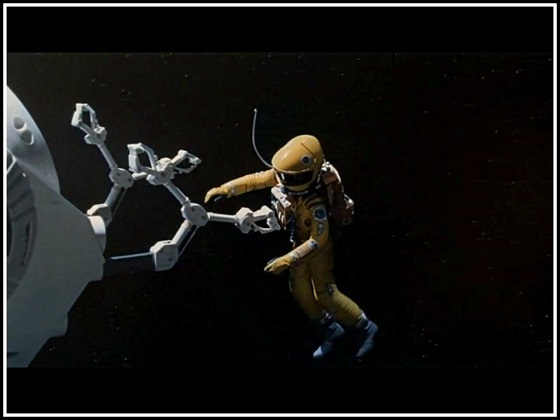
Yeah, this one was pretty goddamned bad. In 2001: A Space Odyssey, two pilots were watching over a spacecraft on a long-haul voyage to Jupiter when their A.I. program malfunctioned. The pilots of the “Discovery One” relied on H.A.L., their artificial intelligence system, to monitor the vital signs of three cryogenically frozen scientists on-board, as well as run pretty much everything on the ship that didn’t require a pair of human hands. When H.A.L. reported that a component on the ship that controlled their antenna was about to malfunction, pilots Dave (Keir Dullea) and Frank (Gary Lockwood) went out to investigate. An inspection of the device showed no defects, however, which was a startling development since H.A.L. was supposed to be infallible. Scared that their A.I. might be on the fritz, Dave and Frank secretly agreed to disconnect H.A.L. if “he” was indeed wrong about the component.
H.A.L. didn’t take too kindly to this. In a demonstration of startling self-awareness, H.A.L., a computer program, took independent action to save his own skin (as it were), and went after Dave and Frank. Only half successful in these efforts, H.A.L. was able to kill Frank, yet failed to do anything to Dave except piss him off after the soulless son of a bitch tried to lock Dave out of the ship. The rattled astronaut didn’t take to kindly to this assault, and promptly floated into the belly of the ship to rip the circuits out of H.A.L.’s processor. On a mission to Jupiter to explore and possibly discover the origins of life on Earth, and Dave had to deal with this bullshit: unbelievable. Sure, the body-count wasn’t too high on this one (just four), yet having your artificial intelligence unit turn on you millions of miles out into space, without any tech. support: that’s just bad. Hey, speaking of robot helpers gone bad …
Although the original film, Alien, dealt with a space disaster on par with what went down in Prometheus, the former film dealt with people on a commercial mission that developed into one of cruel discovery. The latter picture concerned itself with pure exploration, and definitely met with disaster, thus it seemed just a bit more appropriate for today’s purposes. In Prometheus, a pair of scientists discovered a star map on Earth that seemed to direct humanity towards a distant moon, LV-223. An expedition was formed to get to the bottom of this cryptic message, and to see if intelligent life really was out there, beckoning mankind forth into the stars. Once they reached their destination, and landed on LV-223, one of the scientists, Dr. Shaw (Noomi Rapace), started to put the pieces of the puzzle together. The moon seemed to be some kind of testing ground for a biological weapon, one that would compromise the DNA of a species and plant an alien hatchling inside of them after exposure to the chemical agent.
Anybody who has seen a movie in the Alien franchise knows how nasty these gestating creatures (Xenomorphs) can be, and Prometheus honored the franchise’s proud tradition. Except for a double-crossing android, Dr. Shaw was the only member of the expedition to survive, as Xenomorphs, “Engineers,” and old-fashioned bad luck took everyone else out. And while audiences have come to expect no less when taking in a movie from this franchise, as it concerned space exploration gone bad, it doesn’t get a whole lot worse than stumbling upon a genocidal alien race that just so happens to manufacture the universe’s deadliest creature as a pet. Yeah, that’s a fairly rotten turn of events. Still, it could have been worse. Although LV-223 was a bad place, it was nothing compared to the neighborhood the title ship from our last movie found itself in…
Now, there’s normal, everyday-bad, and then there’s accidentally-opened-a-portal-to-Hell-bad: Event Horizon fell into the latter category. Yes, while some films have plumbed the depths of space catastrophe via an electrical malfunction, or a faulty A.I. component, this flick took it up a notch. In the movie, Event Horizon was the name of a ship in the future that was sent up into space to test out a new inter-dimensional gravity drive: one that could fold space-time and send astronauts millions of light-years away in an instant. The film picked up seven years after the Event Horizon’s maiden voyage, which saw the experimental vessel disappear without a trace. When it reappeared on the other side of bum-fuck-nowhere, near Neptune, the parties responsible for the Event Horizon’s technology sent a search and rescue team out to determine just what the hell had happened. When Captain Miller (Lawrence Fishburne) and his crew reached the ship, however, things turned south.
After some digging around and a few deaths, Miller and his team learned that the gravity drive on the Event Horizon had opened up a portal in space-time, but instead of popping up in some other corner of the galaxy, the ship took a detour to Hell. No, that wasn’t hyperbole. The Event Horizon went exploring in space, accidentally tore open the fabric of the universe, and wound up in Satan’s backyard. When the ship returned from its little pleasure cruise, everybody that had been on-board was dead, and the explorers that accompanied Cpt. Miller on his search and rescue mission were on a fast-track to join them. The Event Horizon had a knack for possessing crew members, and went to work on Miller and his team like it was on a tight schedule. It had already compelled the last crew to tear out their own eyes and murder each other, and was all set to pull the same trick off again before Miller stepped up and blew the goddamned ship to bits. Although far more people died on the USS Kelvin, the implications of what this movie presented were far more terrifying than a rogue Romulan (even one with the capacity to destroy an entire planet). And as bad as Xenomorphs are, they’re like a bus full of Kindergarten teachers compared to actual demons. So, yeah, for presenting a scenario where good-intentioned space exploration went about as wrong as it could ever possibly go, Event Horizon got the top nod.




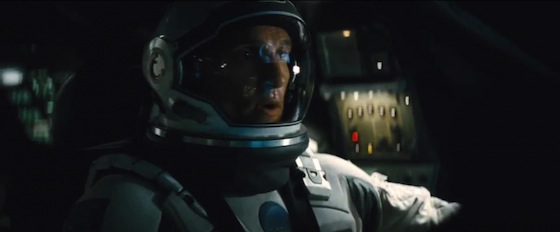

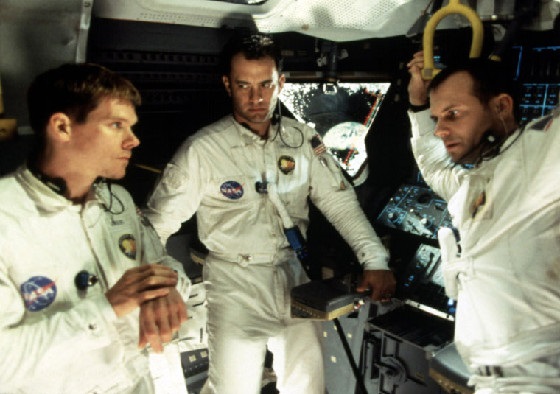
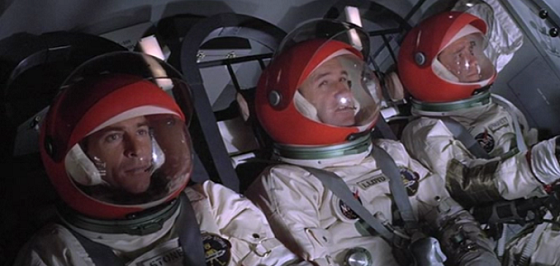
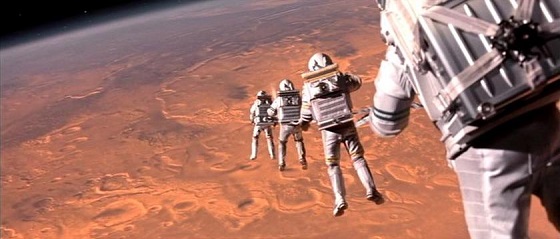
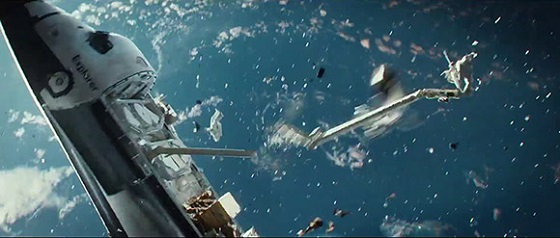

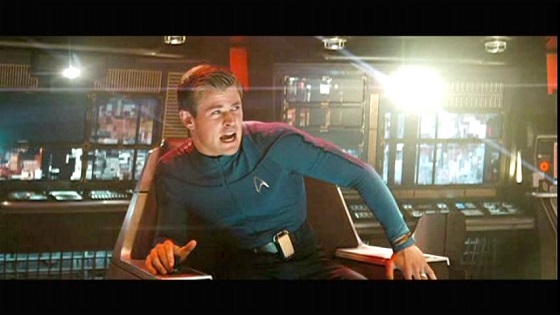
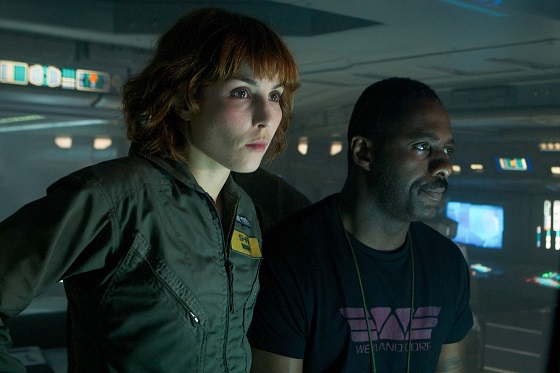
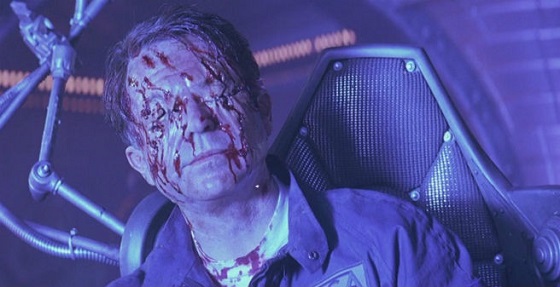

Comments on this entry are closed.